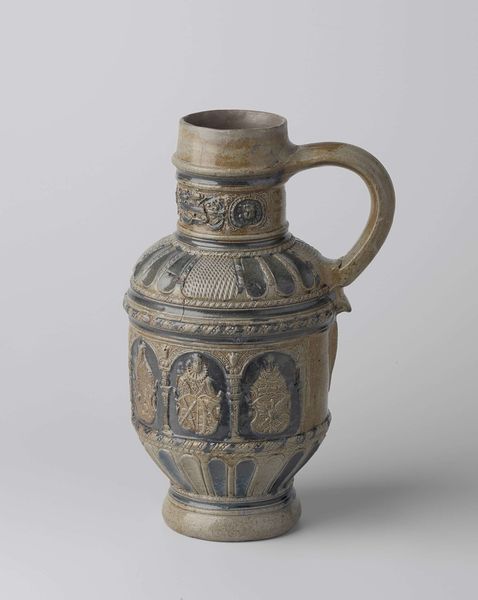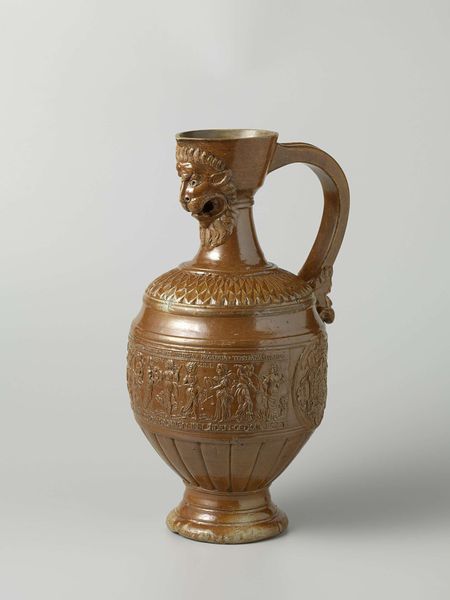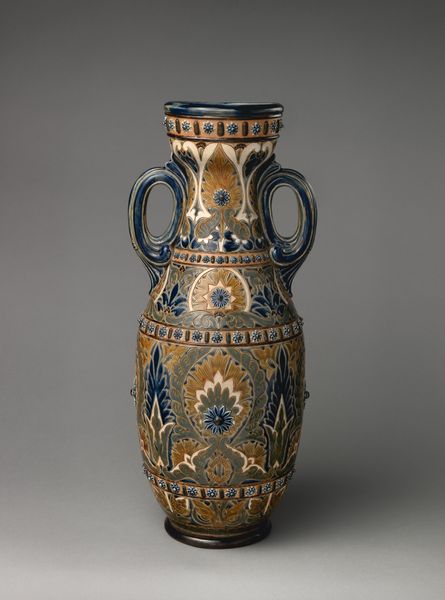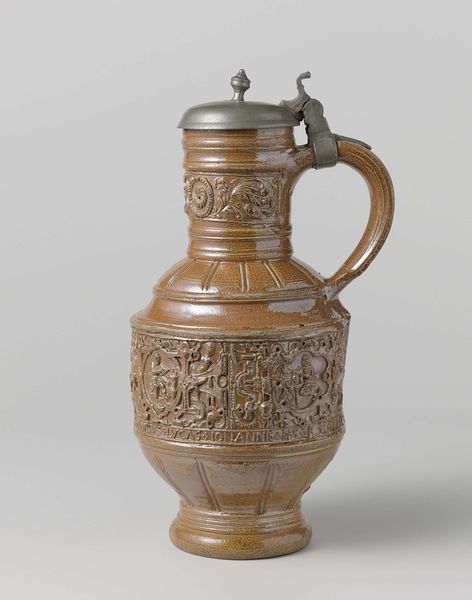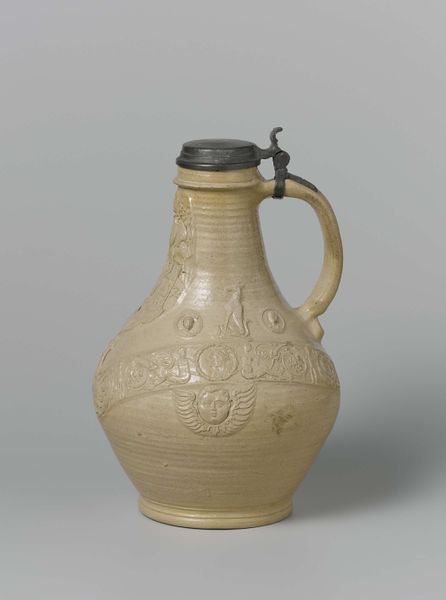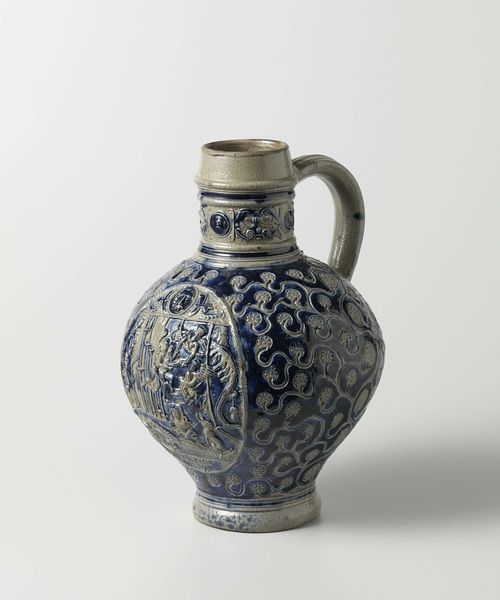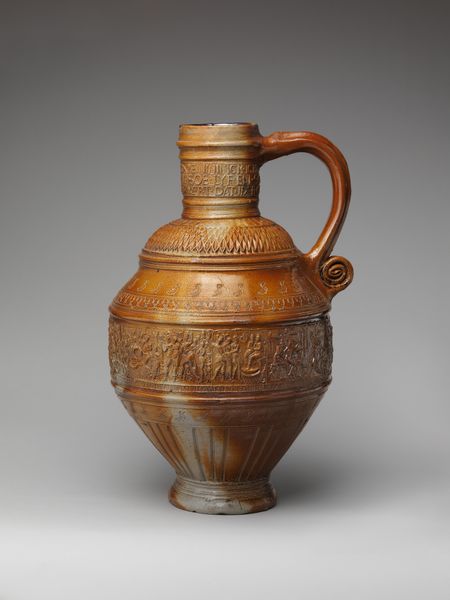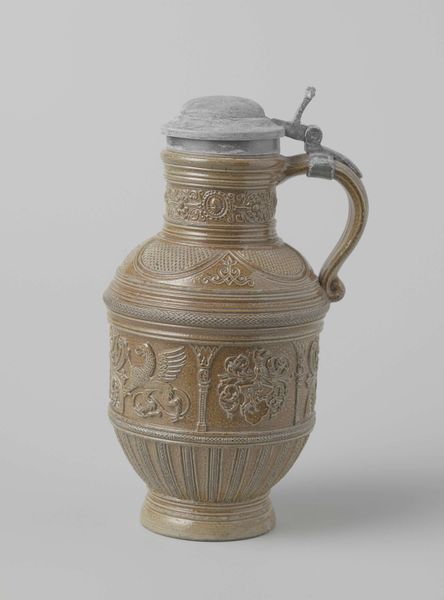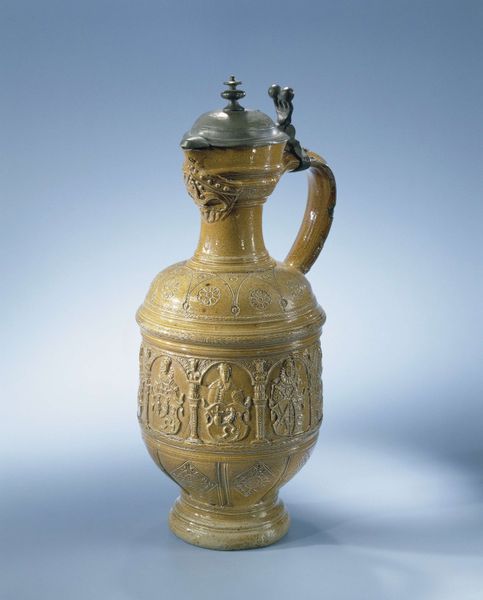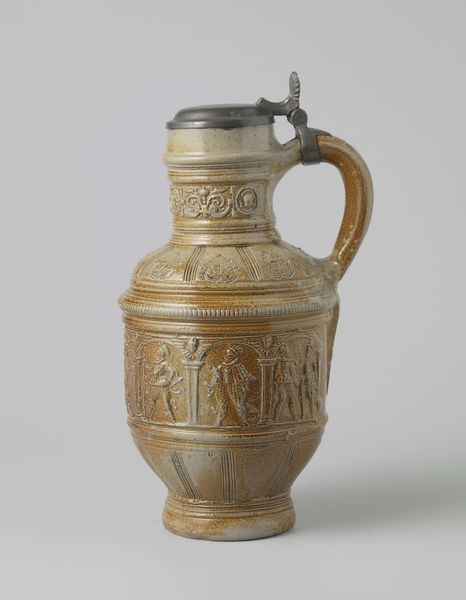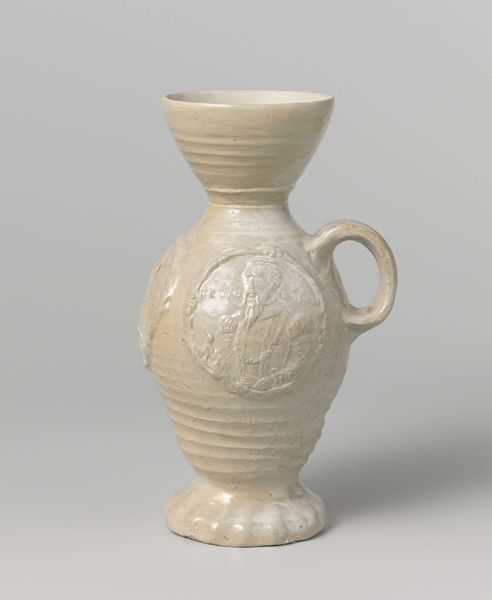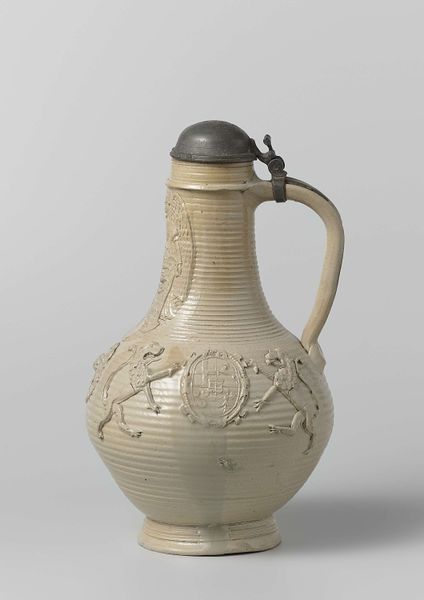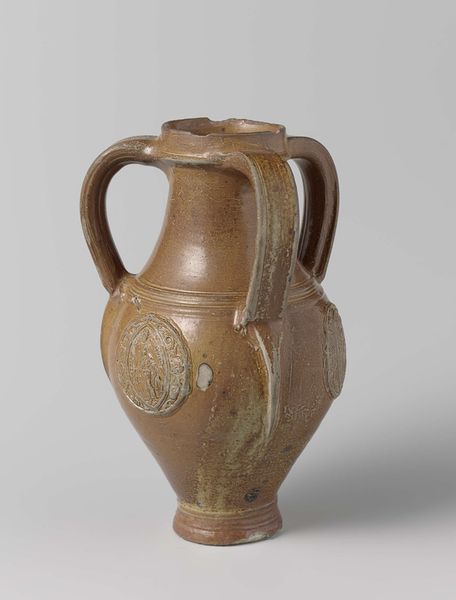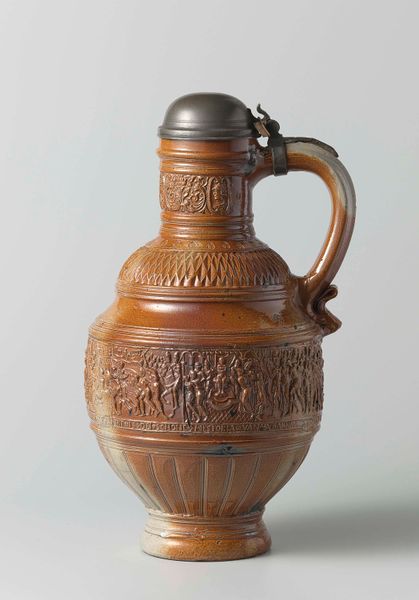
ceramic
#
medieval
#
ceramic
#
stoneware
#
ceramic
Dimensions: height 47.6 cm, diameter 10 cm, diameter 26.6 cm, diameter 13.5 cm, width 29 cm
Copyright: Rijks Museum: Open Domain
Curator: What strikes me immediately is this jug’s slightly stern but refined aura. The cobalt blue against the stoneware gives it an almost regal feel. Editor: Indeed. The “Jug with a representation of the electors” crafted around 1602-1620 is a remarkable example of ceramic work, reflecting the political landscape of the Holy Roman Empire at the time. The piece is attributed to Jan Baldems Mennicken. Curator: Ah yes, the electors. You can see them represented in those arched panels that encircle the middle section, right? What power these symbols must have held. To see these figures—even symbolically—adorning something as quotidian as a jug, well, it’s fascinating. Editor: Precisely! These weren’t merely decorative choices. The imagery around this jug speaks to power, legacy and also regional identity, intended to impress on anyone drinking. It shows the importance of civic virtue made useful and functional. Curator: Do you find that pieces like this offer a view into the anxieties of the period? It's as if the artist is not simply depicting power but perhaps grappling with its permanence, encoding meaning that now, centuries later, prompts new reflection. Editor: It certainly opens questions, prompting dialogue on statecraft of its time. The strategic distribution and function of stoneware during this time frame would signal the role this object plays. A piece like this jug signifies not just utility but also complex layers of symbolism. The ceramic artwork serves to educate as much as hydrate, in a public discourse made permanent through form. Curator: Thank you, my friend. Now, with this information I have renewed admiration of its ability to communicate historical dynamics within material. Editor: Yes. It exemplifies the capacity of everyday objects to embody potent socio-political ideas—a vivid intersection of history, utility, and art.
Comments
No comments
Be the first to comment and join the conversation on the ultimate creative platform.
